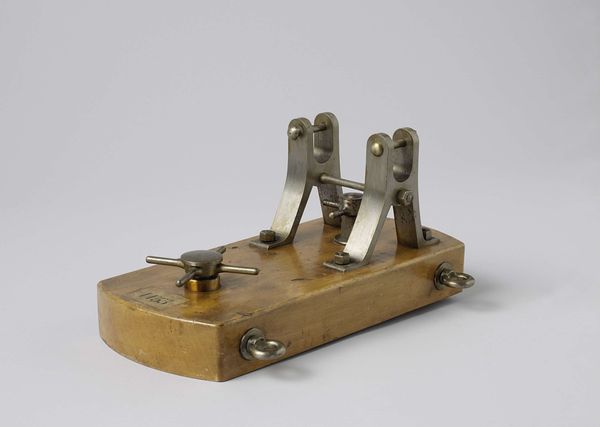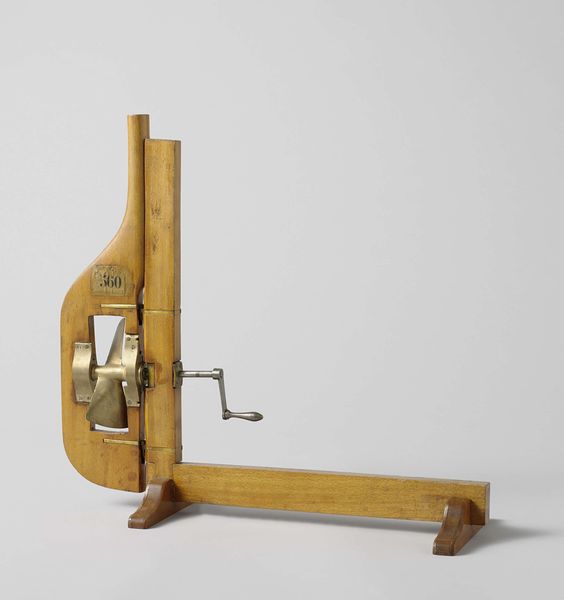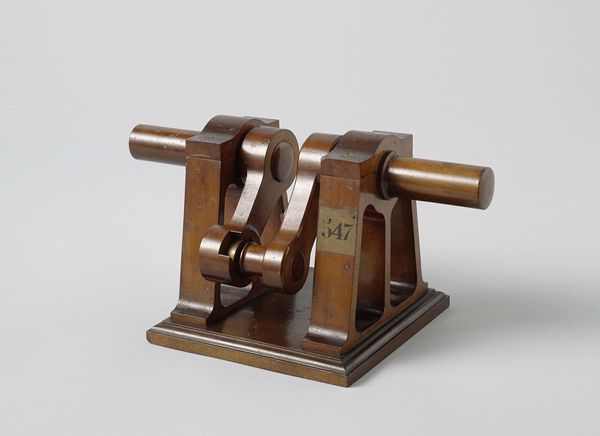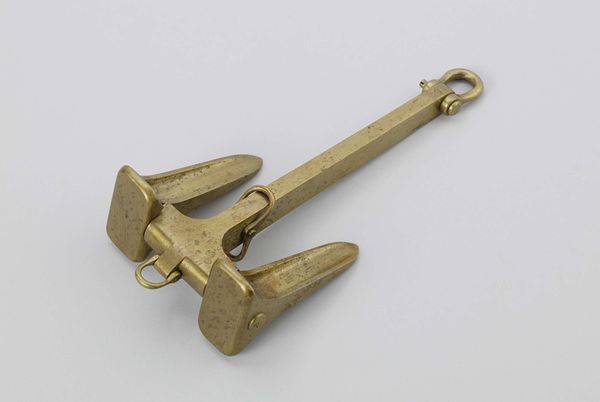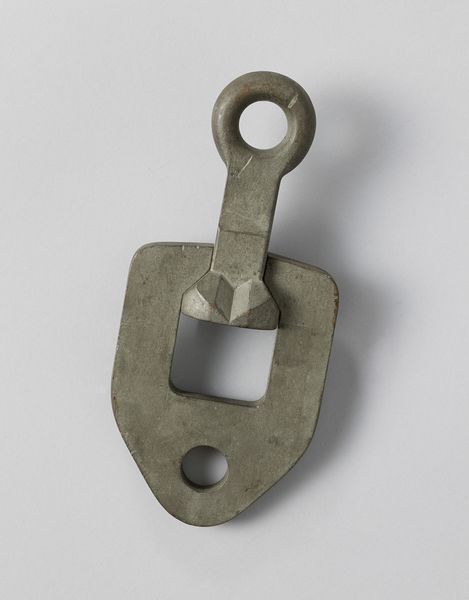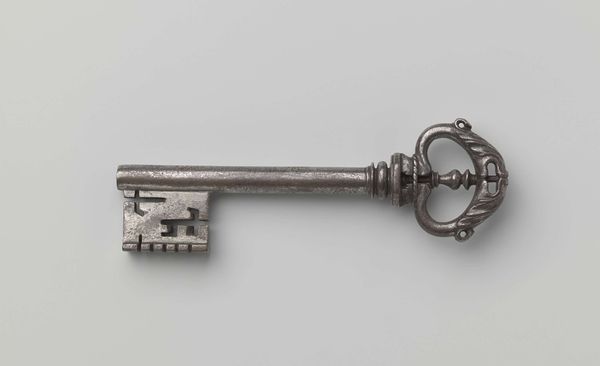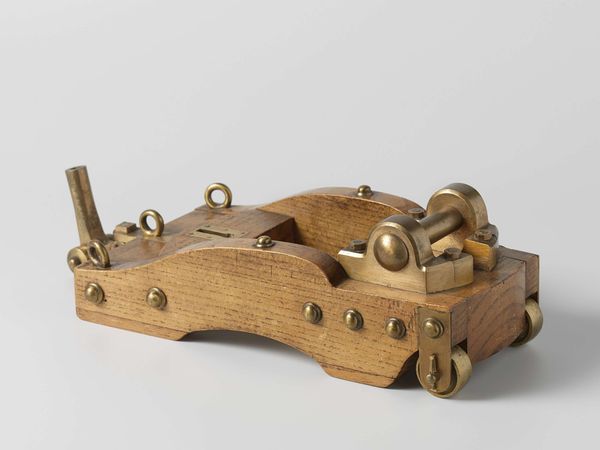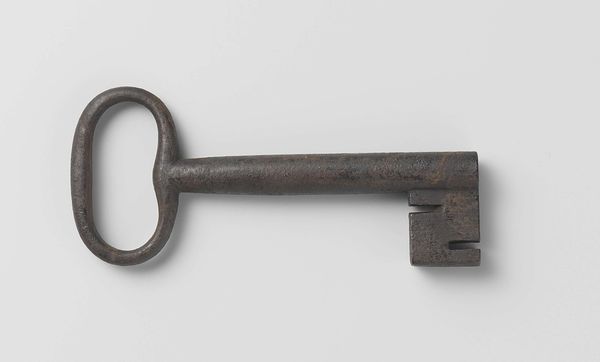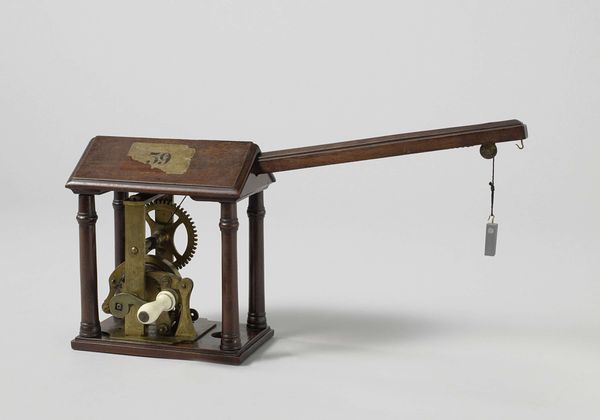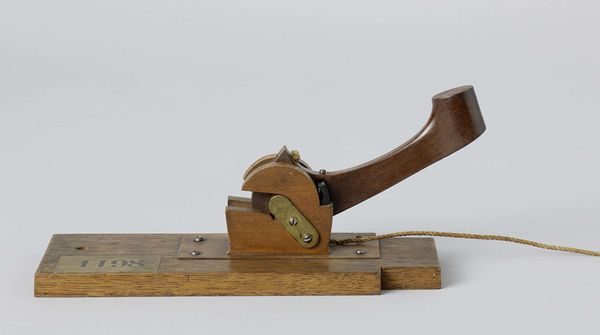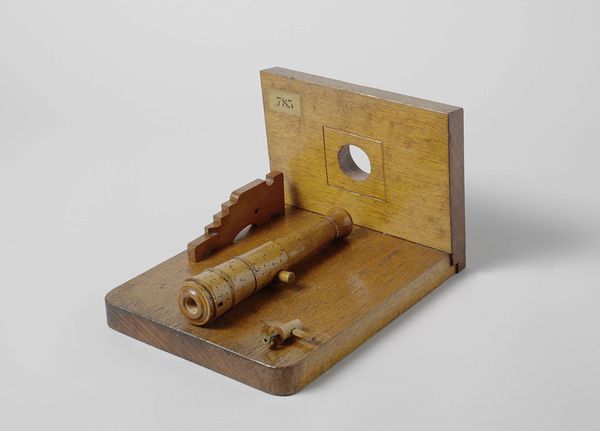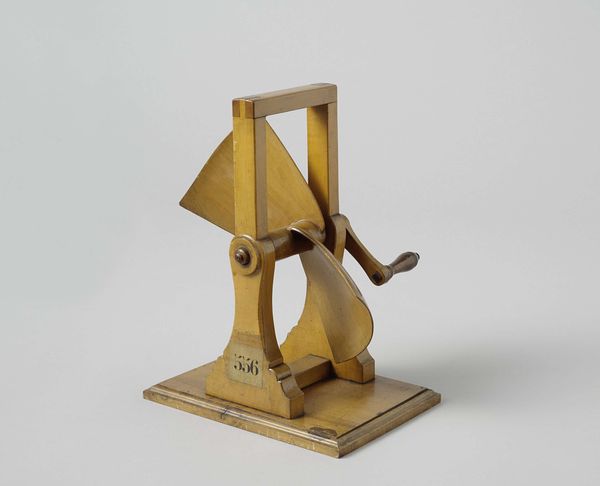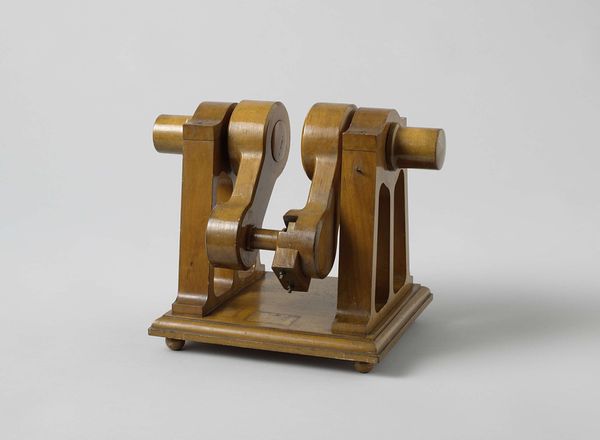
metal, sculpture
#
portrait
#
neoclacissism
#
clear graphic shape
#
3d sculpting
#
3d model
#
3d printed part
#
metal
#
plastic material rendering
#
virtual 3d design
#
sculptural image
#
3d shape
#
geometric
#
sculpture
#
3d digital graphic
#
metallic object render
Dimensions: height 21.5 cm, width 17.2 cm, depth 7.5 cm
Copyright: Rijks Museum: Open Domain
Edward Massey created this intriguing brass "Sounding Machine" sometime in the late 18th or early 19th century, a period of intense scientific innovation in Britain. The device was meant to measure the depth of the sea, and the distance a ship had traveled. But it also speaks to the wider social and cultural context of the British Empire. Britain's naval power and global trade routes were essential to its economic and political dominance. Institutions like the Royal Navy and the East India Company drove a demand for increasingly sophisticated tools. Massey and other instrument makers responded to this demand. Looking closer, we see the maker’s name inscribed on its surface, a signature of sorts. This highlights the role of individual craftsmanship within the larger context of industrial advancement. Further research into trade records, instrument catalogs, and the archives of maritime institutions would provide a richer understanding of Massey's place in this history. The meaning of this object emerges from its embeddedness in a specific time, place, and set of power relations.
Comments
rijksmuseum about 2 years ago
⋮
‘The numbers tell the tale’ is a saying that also applied on board ships. The depth of water could be determined using a sounding line. The design for this sounding machine was patented by Edward Massey in 1802. The machine was attached to a sounding line. As it sank to the seabed, a rotating vane drove a counter with a wormscrew; its revolutions were converted to the depth in fathoms.
Join the conversation
Join millions of artists and users on Artera today and experience the ultimate creative platform.
